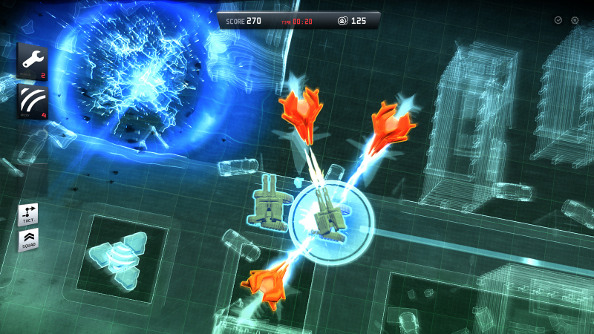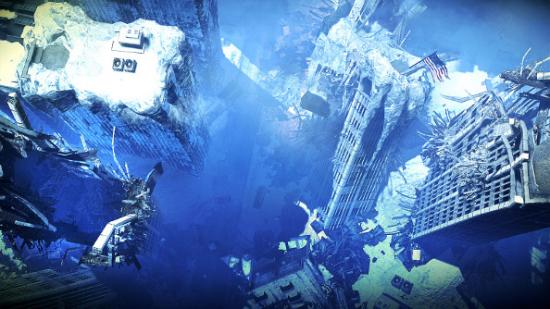During all of PAX East, I may not have had a more pleasant surprise than Anomaly 2. I enjoyed the first game, which was a fun inversion of the tower-defense genre where you control a convoy of upgradeable combat units and guide them through a maze of alien towers. It looked great and I really enjoyed my first few hours with it, but I quickly hit a point where I felt I needed something else to hold my interest.
Anomaly 2, with its asymmetric multiplayer, looks like it fits the bill perfectly. Where the first game left me disappointed with its lack of depth, Anomaly 2 caught me off guard with just how sophisticated it can be.
I played one game apiece on attack and defense, and each side is effectively playing a different game. The defender has multiple sites to hold against the attacker, but can only build turrets in a certain radius from the first tower they put down. The attacker, meanwhile, can change routes at any time, so there is a preliminary guessing game of feints and false-starts before the main battle is joined.
The defender accrues build points steadily, however, and can place generators that yield even more points, so the attacker shouldn’t dither for too long. As they gain points, defenders can place upgraded towers or spend points on global upgrades to things like damage and construction rate. The attacker, on the other hand, gains points for destroying towers, extra points for taking down generators (making them a liability for the defender if they come under attack), but they also have to succeed in their primary goal of taking down objective buildings the defender must protect.
In practice, all of this makes for a tightly-paced (but not frantic, thanks to pause options) multiplayer game that is far more like a competitive card game than you might expect from a tower defense descendant. Each tower and vehicle has its own special role, and both players have to react quickly and decisively to each other’s deployments, and know when to pop special abilities to provide that critical extra punch of defense bonus.

For instance, while the attacker’s commander character can run around planting decoys to draw turret fire and deploying area-of-effect repair stations, the defender has the option of turning one of the turrets into a self-destructing roadside bomb. It’s hard to time correctly, but you can devastate the convoy with a single massive blast if you get it right.
When I was defending, I discovered that I constantly had to reassess my defense. Did I have the right mix of turrets out, and should I be upgrading them or tearing them down to deal with some new units the attacker was bringing onto the field. As the attacker, there were times I had to quickly turn my convoy around because I had the wrong units, and I needed to switch out my tanks for longer range artillery, because I was getting chewed up by short-range, rapid-fire. You can never just sit back and watch things play out, but must instead be thinking of better ways to adapt.
I don’t know whether Anomaly 2’s single-player will address my reservations about the first game, but the multiplayer looks like much more than an alternate play mode. For me it’s become the main attraction, showing that Anomaly’s systems are capable of depth and counterplay I never would have expected.
